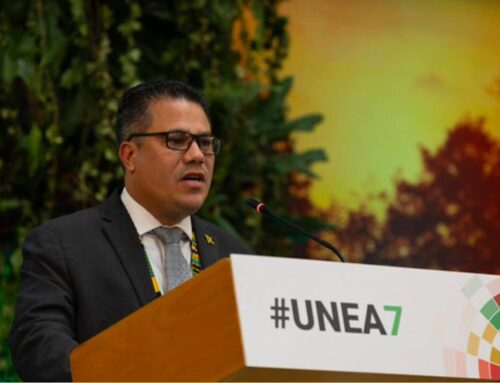Subsidised ‘green’ energy is damaging Britain’s environment – and it’s costing millions
March 30, 2025
Millions of pounds of public subsidies have been used to support a form of green energy that experts warn is leading to environmental damage and polluting Britain’s rivers.
An area equivalent to roughly half the size of Greater London is now being used across England to grow the ‘energy crop’ maize to produce biogas, which has been billed as a sustainable alternative to fossil fuels.
But environmentalists warn there have been “unintended consequences” from the rush to grow crops for energy, including a reduction in the amount of land available for growing food.
They say the current system has echoes of the Drax scandal, which saw environmentally important forests in Canada cut down to produce renewable energy in the UK.
“Green energy solutions need to be designed carefully, else they can incentivise practices that are destructive to the natural world,” warns Gareth Morgan, Head of Farming and Land Use Policy at the Soil Association.
“Large scale cultivation of maize for energy is another example resulting in perverse and counterproductive solutions.”
What is biogas?
Biogas is a type of fuel that’s produced when organic matter, such as food or animal waste, is broken down via a process known as anaerobic digestion. This biogas can be used for localised energy purposes or refined to create biomethane, which can be injected directly to the gas grid.
The technology has been in existence since the late 1800s, but has been encouraged by governments in the UK and Europe in recent decades as a ‘sustainable’ alternative to fossil fuels.
Since 2009, anaerobic digestion plants in the UK have received significant subsidies directly or indirectly through schemes that are paid for via levies on energy bills.
Research by the Soil Association previously found these subsidies were costing UK taxpayers up to £50m per year. The current subsidy scheme, the Green Gas Levy, is expected to bring in a maximum of £266m annually at its peak in 2036/37.
“The idea behind biogas and digesters is a good one, billed as a way to make sure organic waste doesn’t go to landfill,” says Carina Millstone, Executive Director at environmental charity Feedback Global.
Anaerobic digesters can run on a variety of ‘feedstocks’, including food waste collected by councils and animal waste from farms. This is promoted as a win-win: a sustainable way to recycle waste and create green energy in the process.
But in reality many anaerobic digestion plants rely on purpose-grown energy crops to function.
According to the Government, purpose-grown crops account for roughly a quarter of the feedstock used in the plants in the UK, while food waste makes up 32 per cent and animal waste 16 per cent.
Millstone describes this as the “worst possible outcome, where crops are being grown to feed digesters rather than people”.
Other forms of renewable energy, such as solar and wind farms, have come under fire for using up limited land resources, but research by Feedback Global has found solar can generate roughly 12-18 times more energy per hectare than growing crops for anaerobic digestion.
Martin Lines, a farmer and CEO of the Nature Friendly Farming Network, agrees that energy crops are a poor use of Britain’s land.
“We are using significant amounts of grade one and two, our best quality land, to grow maize and other energy crops, when there is an increased focus on water resources and food production,” he says.
The problem with maize
Maize, the cereal crop that produces corn, is the plant of choice for biogas producers thanks to its starch content that can produce high methane yields.
The amount of land in England used for maize production has grown by over a third in the past decade from 171,165 hectares in 2014 to 236,733 in 2024.
Maize’s popularity as an energy crop has been a major driver of this increase; 29,373 hectares were used for this purpose in 2014 compared to 87,589 in 2024 (an almost 200 per cent increase).
But maize is a crop that has a reputation for causing environmental damage, associated with soil damage, flooding and river pollution.
“It is the way it is grown rather than the crop itself that can be the problem.” explains Morgan.
“It is generally dependent on more intense ploughing than most crops, plus heavy use of chemicals including climate-harming synthetic nitrogen.”
One of the biggest problems with maize is that it’s harvested in late autumn, meaning the fields are typically left bare over winter and so are prone to washing away into nearby water courses during the wetter months, taking any chemicals and fertilisers in with them.
While sewage has been largely blamed for the poor state of Britain’s rivers in recent years, agriculture is often a larger source of pollution, especially in rural areas.
How energy crops took over the Isle of Wight
Around three per cent of arable land in the UK is currently being used for energy crops, but in some hotspots this is much higher.
Around nine per cent of the Isle of Wight’s total farmland is used for this purpose, according to evidence seen by The i Paper.
Jamie Marsh, Director at Hampshire and Isle of Wight Wildlife Trust, started noticing the transition to this new type of farming around ten years ago.
“When it was first promoted as an idea it was billed as taking the waste product from agriculture and the environment to create energy, but it quickly became apparent that the digesters would only take high sugar content crops,” he says.
“What we started seeing in the early years was a change in farming, and a transition to growing maize and other crops under contract, with the AD plants paying good rates for this.”
Soon the Wildlife Trust started to see the environmental damage being caused by this farming.
“Maize is grown in rows; it’s not generally under sown so you can get a lot of soil erosion and runoff. Everything that’s bound to that soil and sediment – pesticides, fertilisers – all runs off with it into water courses. Consequently, we are seeing poor water quality within our rivers, which are already impacted by a range of other issues and pressures,” he says.
They’ve also encountered problems with the storage of digestate, the byproduct of the biogas process that can be spread on farms as fertilisers.
“We’ve seen issues with digestate lagoons. There have been multiple sites where lagoons constructed on farms have failed and digestate is leaking out into the environment into water courses and protected sites,” he says.
There have also been incidents of farmers spreading the digestate on their land during wet weather, which they are not supposed to do due to the threat of runoff.
Marsh says he understands why farmers have entered these contracts, but says there must be a discussion over appropriate land use on the island. “Ultimately, we all want the same thing, a healthy environment growing healthy food in a sustainable way. Sadly, growing crops for energy production is not actually that green at all,” he says.
Why farmers have turned to energy crops
The Committee on Climate Change, which advises the Government on net zero, says energy crops have a role to play in the UK’s energy transition, and should account for 700,000 hectares of land by 2050.
However, it said this should be driven by three perennial crops – miscanthus, short rotation coppice, and short rotation forestry – that are better for the environment.
These crops currently make up just 8 per cent of the land used for bioenergy in the UK, with maize making up 55 per cent and wheat (used for bioethanol fuel for cars) 34 per cent.
Lines said part of the reason for this is that it was hard for farmers to produce these perennial crops on the scale needed to supply biogas plants. These plants typically enter into long-term contracts with local farmers who agree to grow maize on a minimum acreage of their farm.
“There are other perennial crops we can grow on more marginal land and other places that actually deliver better carbon sequestration and less environmental harm. But can we do that at the scale that many of these digesters want? They want 10,000 acres on the bigger one,” Lines explains.
For farmers, diversifying into energy crops can provide economic security in an uncertain world, where it is becoming increasingly difficult to make a living from growing food.
“The financial return is guaranteed and significantly more than the current returns in many of the arable commodity crops,” says Lines.
“I’m not critical of the farmers for supplying anaerobic digestion plants,” says Marsh. “It is a sound business decision in an uncertain economic climate. I’m critical of a system that allows this to be a better way to farm over the production of food.”
Some say subsidies have encouraged a system that means a farmer can make more money growing energy over food.
“Because of the amount of money involved in it, the people running the plants can rent land at a significantly higher price or value than other farmers in the area,” explains Lines.
Changes have been made to the subsidy system over the years. The Green Gas Support Scheme only provides support for the production of biomethane and stipulates that at least 50 per cent of the energy must be produced using waste or residue feedstocks, such as food and animal waste.
Morgan says policymakers must go further. “Anaerobic digestion plants should be used for processing food waste and manures,” he says.
“Ultimately, we need to avoid a tunnel vision focus on reducing carbon emissions and make sure net-zero policies also protect soils and our rivers.”
“Like many of these policies, the core of it is set on good principles of turning waste products, either food products or manure, into an energy product,” agrees Lines, but says there are currently too few “checks and balances” on the system.
“Government needs to understand the amount of land being used for this and make sure incentives that come forward don’t lead to perverse outcomes.”
A spokesperson for the Department for Energy Security and Net Zero said: “Biomethane can play an important role in reducing our reliance on imported gas, increasing our country’s energy security and helping to deliver net zero.
“We are looking at how we can further support the sector and encourage sustainable feedstock options.”
Search
RECENT PRESS RELEASES
Related Post



